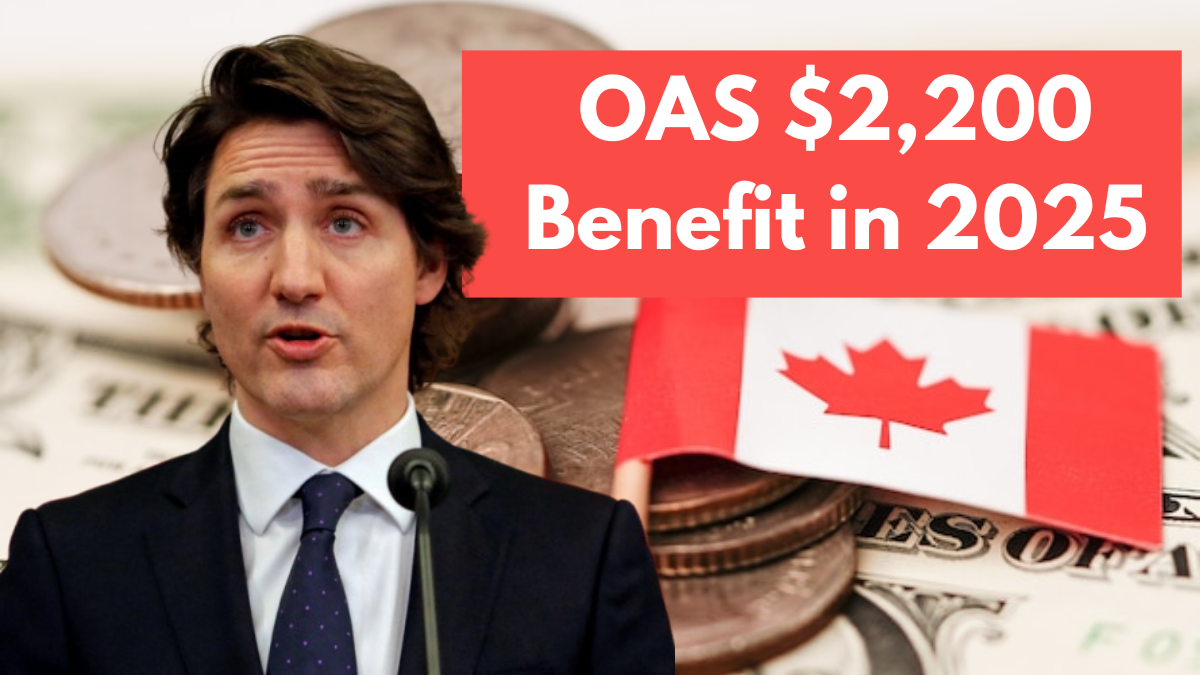The Old Age Security (OAS) program is a crucial financial support system for Canadian seniors, ensuring they have a stable income during retirement. With potential monthly benefits exceeding $2,200 in 2025, understanding eligibility criteria, payment amounts, and supplementary programs like the Guaranteed Income Supplement (GIS) is essential for financial planning. This guide covers all aspects of OAS, including eligibility, payment structures, clawback rules, and application procedures.

Understanding the Old Age Security (OAS) Program
The OAS program provides monthly payments to Canadians aged 65 and older, helping them maintain a basic standard of living. Unlike the Canada Pension Plan (CPP), which is contribution-based, OAS is funded through general taxation and is primarily determined by residency in Canada.
History and Evolution of OAS
Established in 1952, the OAS program has evolved over the decades to keep up with inflation and the increasing senior population. Initially, it offered a modest pension, but periodic adjustments have made it a significant part of Canada’s retirement income system.
OAS Payment Amounts in 2025
The maximum monthly OAS payments for 2025 are structured as follows:
- Seniors aged 65-74: $727.67 per month
- Seniors aged 75 and older: $800.44 per month
These amounts are adjusted quarterly to reflect inflation, ensuring that seniors’ purchasing power remains stable.
Guaranteed Income Supplement (GIS)
The GIS is an additional financial benefit for low-income seniors receiving OAS. Depending on individual and household income levels, the GIS can significantly boost total monthly payments:
- Single seniors: Up to $1,500 per month
- Couples (both receiving OAS and GIS): Up to $1,800 per month
Combining OAS and GIS for a Total Benefit Exceeding $2,200
For eligible seniors, combining OAS and GIS can result in total monthly payments surpassing $2,200. For example:
- A single senior aged 75+ who qualifies for both OAS and GIS could receive up to $2,400 per month.
Real-Life Example
Samantha, a 75-year-old Canadian retiree, qualifies for full OAS and GIS benefits due to her low income. In 2025, she will receive:
- OAS: $800.44 per month
- GIS: $1,599.56 per month
- Total: $2,400 per month
This demonstrates how OAS and GIS together can significantly enhance financial stability for seniors with limited income sources.
OAS Clawback (Recovery Tax)
High-income seniors may be subject to the OAS clawback, officially known as the Recovery Tax. If your annual net income exceeds a specific threshold, a portion of your OAS payments will be deducted.
- 2025 clawback threshold: $81,761
- Reduction rate: 15% of income exceeding the threshold
Example Calculation
If a senior earns $90,000 annually, the clawback applies to the excess income over the threshold:
- Excess income: $8,239 ($90,000 – $81,761)
- Clawback amount: $1,235 (15% of $8,239)
- OAS payments will be reduced by $1,235 annually
Eligibility for OAS Benefits
To qualify for OAS, you must meet the following criteria:
- Age Requirement: Must be 65 years or older
- Residency:
- Lived in Canada for at least 10 years after turning 18 for a partial benefit
- Lived in Canada for 40 years after turning 18 for the full benefit
OAS Eligibility for Immigrants & Non-Residents
Immigrants and non-residents may qualify for prorated OAS benefits based on their years of Canadian residency. If you’ve lived in Canada for fewer than 10 years, you may not qualify, but international agreements may help certain applicants receive benefits.
OAS Payment Dates in 2025
OAS payments are disbursed monthly, usually on the third business day of the month. Seniors can choose direct deposit for faster and more secure payments.
2025 OAS Payment Schedule
| Month | Payment Date |
|---|---|
| January | January 3 |
| February | February 5 |
| March | March 5 |
| April | April 3 |
| May | May 3 |
| June | June 5 |
| July | July 3 |
| August | August 3 |
| September | September 5 |
| October | October 3 |
| November | November 5 |
| December | December 3 |
How to Apply for OAS Benefits
- Visit Service Canada: Applications can be submitted online or via mail.
- Prepare Your Documents: Have your Social Insurance Number (SIN), proof of Canadian residency, and banking information ready.
- Submit Your Application: Once processed, Service Canada will notify you of your approval status and payment details.
Common Misconceptions About OAS
Myth 1: “OAS is only for those who worked in Canada.”
Fact: OAS is based on residency, not work history. As long as you meet residency requirements, you qualify.
Myth 2: “Everyone receives the same OAS amount.”
Fact: OAS payments vary based on age and residency duration. Those who have lived in Canada longer receive more.
Myth 3: “OAS payments are tax-free.”
Fact: OAS is taxable income and must be reported when filing taxes.
Conclusion
The OAS program plays a critical role in supporting Canadian seniors, providing monthly income to help with the cost of living. With potential benefits exceeding $2,200 per month for eligible individuals, understanding how OAS, GIS, and the clawback system work is essential for effective retirement planning. By staying informed about eligibility criteria, payment schedules, and supplement programs, seniors can maximize their benefits and ensure financial stability in retirement.
FAQs
1. Can I receive OAS while living abroad?
Yes, if you’ve lived in Canada for at least 20 years after turning 18, you can receive OAS payments while living outside Canada.
2. Does OAS increase every year?
Yes, OAS payments are adjusted quarterly based on the Consumer Price Index (CPI) to keep up with inflation.
3. Can I delay my OAS payments?
Yes, you can defer your OAS payments for up to 5 years (until age 70) to receive higher monthly payments.
4. How do I check my OAS application status?
You can track your application through the My Service Canada Account (MSCA) online.
For More Information Click Here
